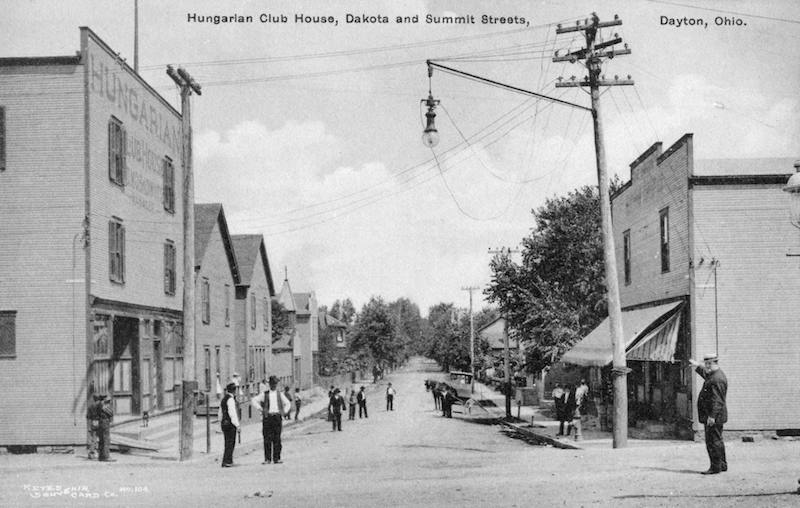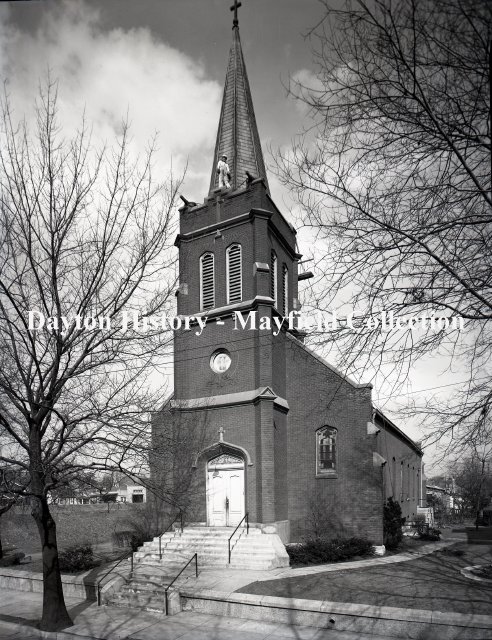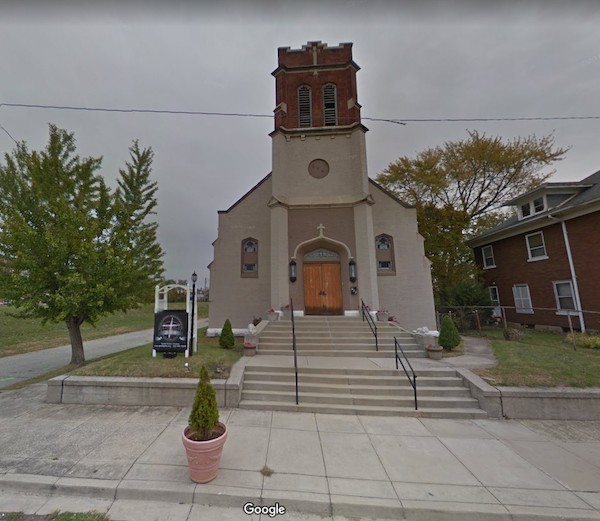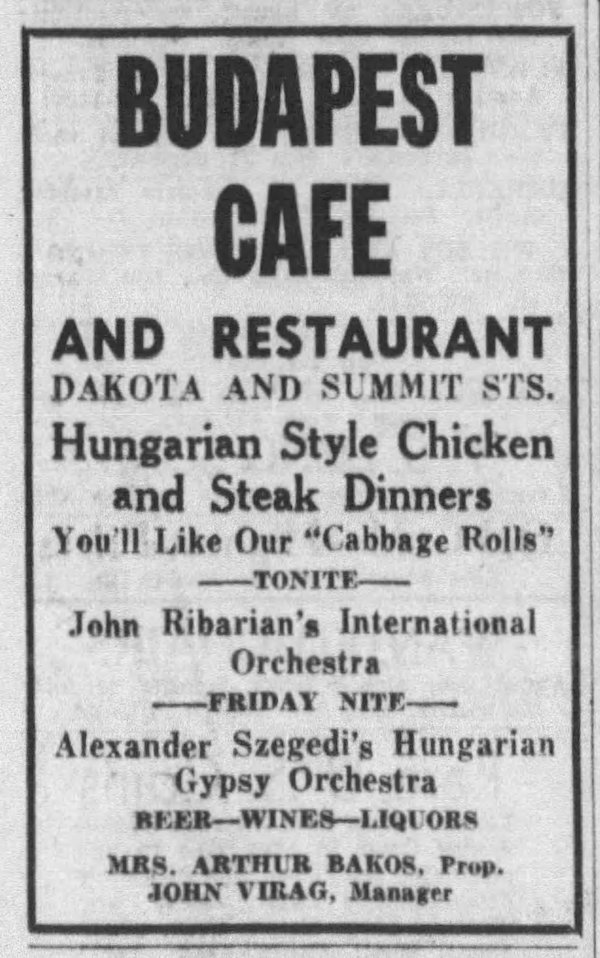University Libraries

Dayton History, UD Connections: Hungarian Immigrants on Dayton’s West Side
By Heidi Gauder and Bridget Garnai
Working from home has afforded some time for researching Dayton’s history and connections with the University of Dayton. Even though we are not able to work in the library, we have online access to some rich primary resources that enable us to dive more deeply into stories all around us.
One of Dayton’s better-known immigrant stories is the Hungarian enclave in Old North Dayton, in the neighborhood near Dayton Children’s Hospital, as evidence of the Hungarian and Eastern European cultures remains. However, before Jacob Moskowitz recruited Hungarians to work for the Barney and Smith Car Co., he brought families over beginning in 1899 to work at the Dayton Malleable Iron Works foundry on Summit Street (now known as Paul Laurence Dunbar Street). The foundry made malleable iron castings for saddles, carriages and wagons and was in need of mechanics and unskilled laborers.
Factories, churches, homes, ethnic establishments
Near Dayton Malleable, in Dayton’s 5th Ward, immigrants of many nationalities settled to work. Alice Doren, secretary of the Immigration and Foreign Community Department of the Young Women’s Christian Association, described the area in her 1917 report “Foreigners in Dayton: An Investigation”:
- "The foreign community second in size is on the west side, west of Broadway and north of Third Street. Here are about six thousand foreigners, of whom are between two and three thousand Hungarians, an equal number of Rumanians, with Poles, Greeks, Macedonians, Serbs, Croatians, Bulgarians, Turks, and Russians, in much smaller numbers."
Doren also identified the churches that were organized by the Hungarian immigrants:
- "The Holy Name Catholic Church on Dale Avenue forms the center of the Hungarians. Across the street from the Catholic church is the Hungarian Baptist Mission, and on the next block on Blaine Avenue, is the Hungarian Reformed Church."
A 1919 Sanborn Fire Insurance Map confirms the proximity and density of the churches and residents. Each church is approximately a half-block away from another. About three blocks south of Holy Name is Dayton Malleable; between these two points, the Sanborn map identifies dwellings, a tenement building, shops, a cigar factory, a bottling works and a Hungarian community hall.
St. Mary’s College connections
The Catholic church served as a center for many of the Hungarian families, and it was here where connections originated with St. Mary’s College, as the University of Dayton was known back then. Father Bernard O’Reilly, S.M., served as pastor of Holy Name before he became president of St. Mary’s Institute in 1908. O’Reilly was at the helm of St. Mary’s for big changes and the major disaster of the Great Dayton Flood, from 1908 to 1918 and later from 1923 to 1932.
During his tenure at St. Mary’s, which became known as the University of Dayton in 1920, O’Reilly continued to support Holy Name and the Hungarian community. He spoke at a 1914 celebration of Hungarian independence and blessed an American flag at a flag-raising ceremony for the newly completed Holy Name school in 1918.
Around this same time, Hungarian-born Father Charles Polichek served as the pastor of Holy Name while also teaching philosophy at St. Mary’s College. Polichek was a celebrated leader of Holy Name and St. Stephen, another Catholic church in Dayton associated with the Hungarian community. In 1913, the community celebrated Polichek’s silver jubilee with a Mass at Holy Name and a “sumptuous feast” in the church basement attended by local leaders, including Mayor Edward Philipps and O’Reilly, who served as the banquet’s toastmaster. An award of excellence for senior philosophy students at the University of Dayton was established in Polichek’s memory and is still awarded today.
Later, Holy Name parishioners were able to hear Mass and homilies in Hungarian twice a month thanks to Father Achilles Edelenyi, a philosophy faculty member at the University of Dayton. Edelenyi’s photo can be found on Page 53 of the 1965 volume of the Daytonian.
Buildings fall, but documents endure
The ethnic neighborhood around Dayton Malleable continued to thrive as families settled and remained. The local newspapers had ads for the Budapest Cafe at Dakota and Summit streets and reported on the football, basketball and baseball teams. As children grew up and had families of their own, they found housing in other parts of Dayton. The roughly 1,300 “foreign-born whites” from Hungary recorded as living in Ward 5 for the 1920 Census dropped to 248 people of Hungarian ancestry in the similar 1960 Census tract. By 1961, the Holy Name parochial school closed, and Holy Name had its final Mass in 1974, when the church served 90 active members. The Journal Herald noted the church’s closing and recounted parishioners’ concerns about preserving the Hungarian culture: “The old people are afraid it will die out in the move to St. Stephen’s. The younger parishioners are hopeful that the Hungarian language, customs and heritage can be maintained.”
Gradually, absentee ownership took a toll on the neighborhood itself, and by 1991, about 75 percent of the neighborhood's homes had been demolished.
Maps, data, digital resources offer window on the past
While much of the West Side’s Hungarian history and structures are now lost, technology and resources such as eCommons, Sanborn maps, the U.S. Census and local websites provide a window on the past. In learning how Holy Name Church and the University of Dayton relied upon each other, we can see just how closely the threads of history connect us.
Further Reading / Bibliography
- "Catholic Clergy and Laity and City Officials Aid in Church Celebration," Dayton Daily News, July 21, 1913, p. 2.
- Cichanowicz, Stanley R., “The Kossuth colony and Jacob D. Moskowitz: An experiment in the settlement of Hungarian immigrants in Dayton, Ohio.” History 401, University of Dayton, 1963. https://www.daytonhistorybooks.com/the_kossuth_colony.html
- “Daytonian Yearbook.” University Yearbooks, 1965. https://ecommons.udayton.edu/archives_yrbk/1
- Doren, Alice M., “Foreigners in Dayton, an investigation,” prepared for the Young Women’s Christian Association Immigration and Foreign Community Department, Dayton, Ohio, 1917. https://www.daytonhistorybooks.com/page/page/5331000.htm
- "Hungarian Independence is Celebrated by Thousands,” Dayton Daily News, March 16, 1914, p. 9.
- "Hungarian School Will Raise Flag," Dayton Daily News, May 4, 1918, p. 3.
- LaBriola, Carrie, “City Hungarians move on, Holy Name church closes,” Journal Herald, April 6, 1974, p. 14.
- Reverend Bernard O’Reilly, 1908-1918; 1923-1932. University of Dayton: A brief history. February 25, 2019. http://libguides.udayton.edu/udhistory
- Sanborn Map Company. Sheet No. 163, Dayton, Ohio, 1919. https://oh0063.oplin.org:2172/viewer/?id=16057
- U.S. Bureau of the Census. Fourteenth Census of the United States Taken in the Year 1920. Population, Number and Distribution of Inhabitants. “Table V, Composition and Charactertistics of the Population for Wards of Cities of 50,000 or More.” United States, Government Printing Office, 1921. https://www2.census.gov/library/publications/decennial/1920/volume-1/41084484v1ch5.pdf
- U.S. Bureau of the Census. U.S. Census of Population and Housing: 1960. Census Tracts. Final Report PHC(1)-35. “Table 1: Characteristics of the population, by Census tracts: 1960.” United States, Government Printing Office, 1962. https://www2.census.gov/library/publications/decennial/1960/population-and-housing-phc-1/41953654v3ch04.pdf
- U.S. Department of the Interior, National Park Service. “European Ethnic Communities, Dayton, Ohio.” National Register of Historic Places Multiple Property Documentation Form, 1991. https://npgallery.nps.gov/NRHP/GetAsset/NRHP/64500477_text
— Heidi Gauder is a professor in the University Libraries and coordinator of research and instruction. She has visited Hungary twice. Bridget Garnai is a lecturer and librarian in the University Libraries. She is of Hungarian descent, some of her great-great-grandparents having arrived in the United States from Austria-Hungary around the turn of the 20th century.






